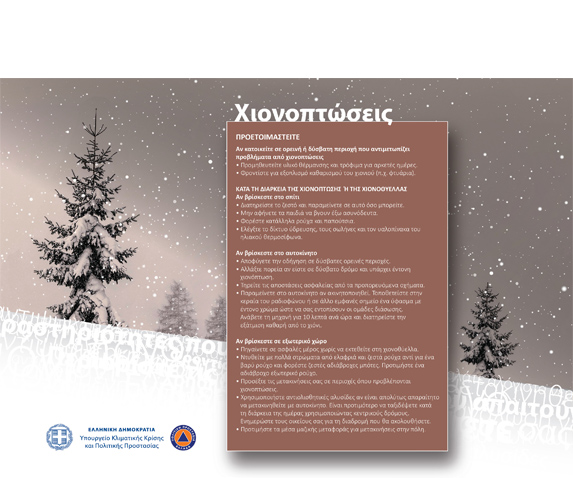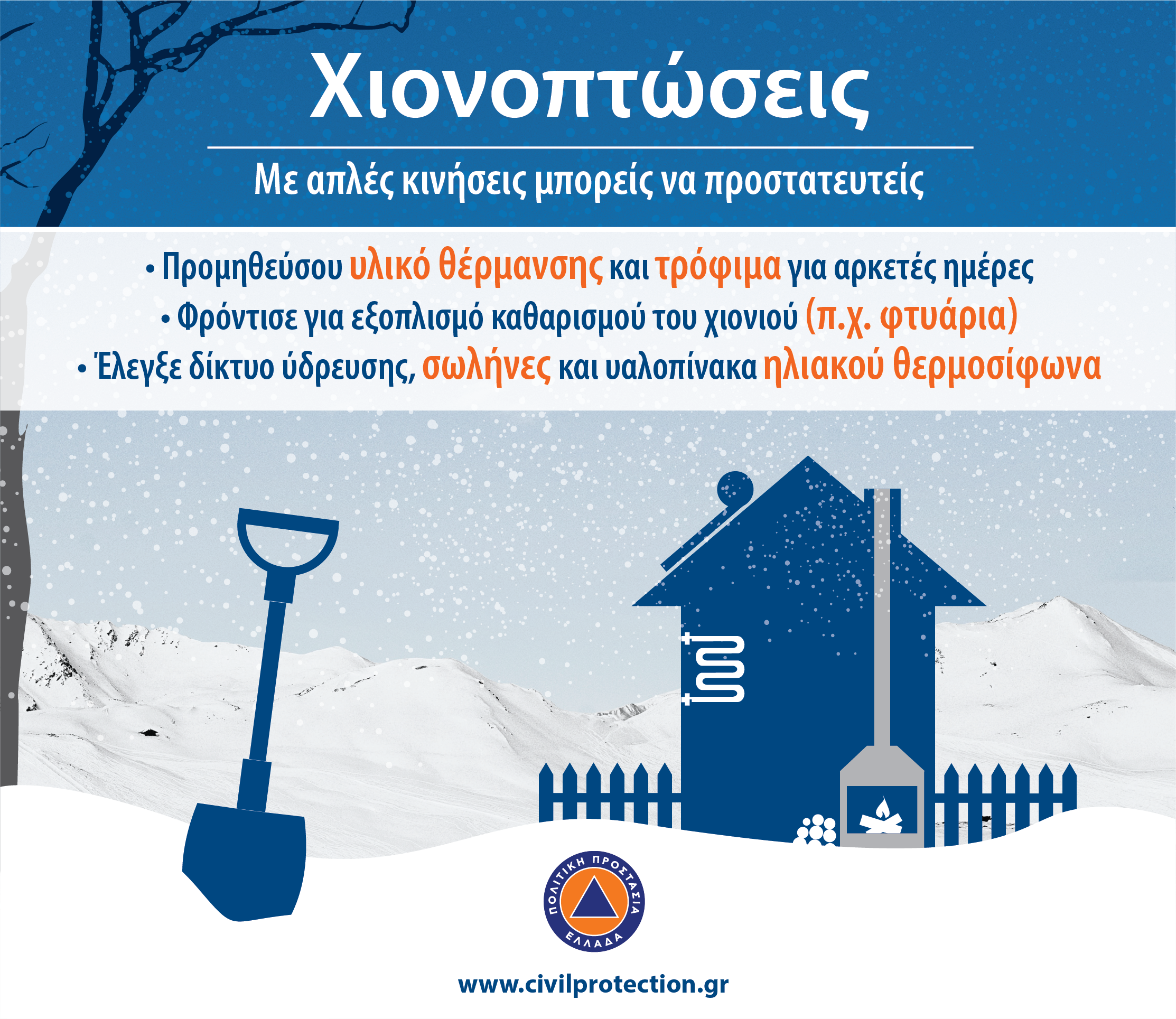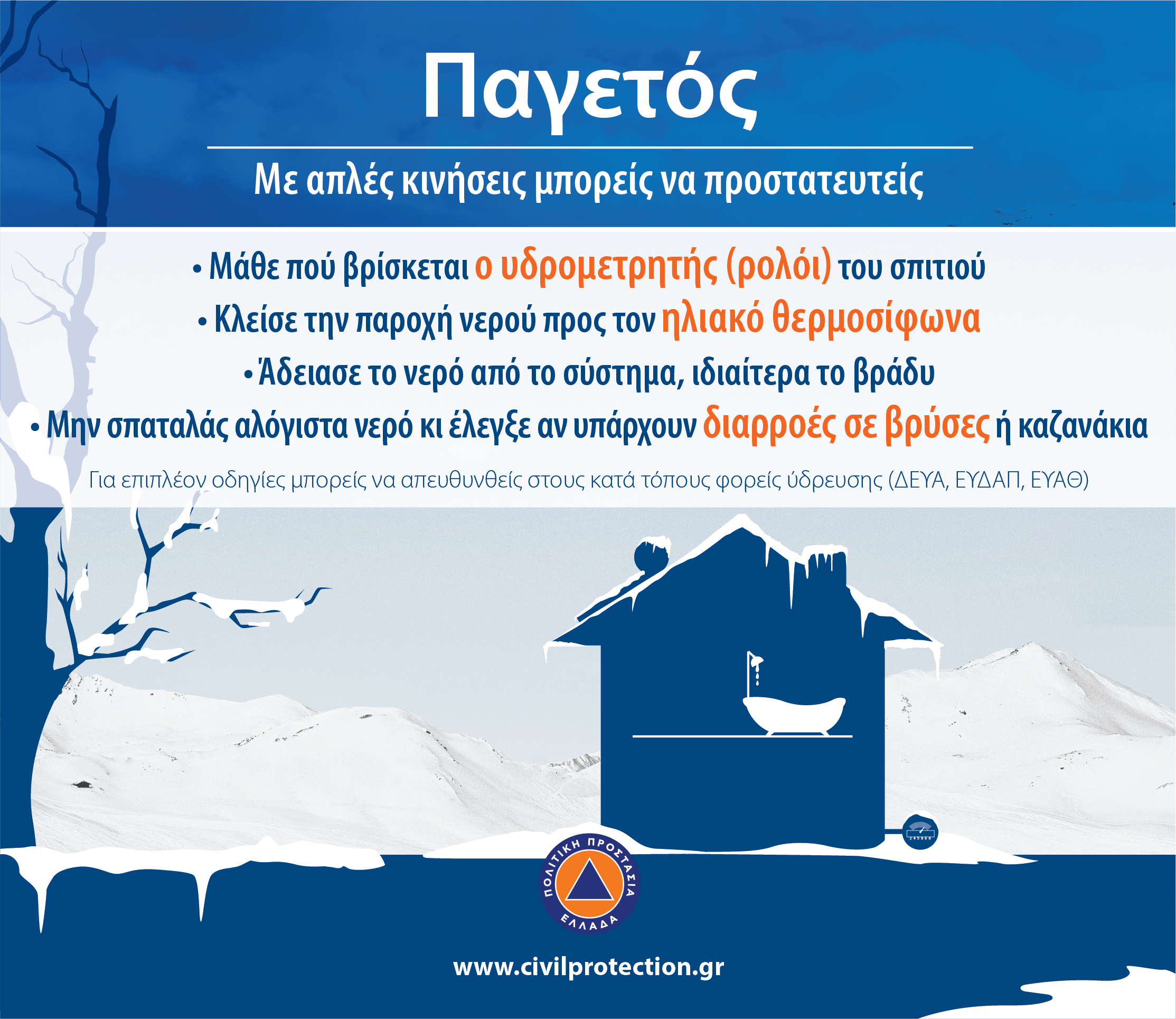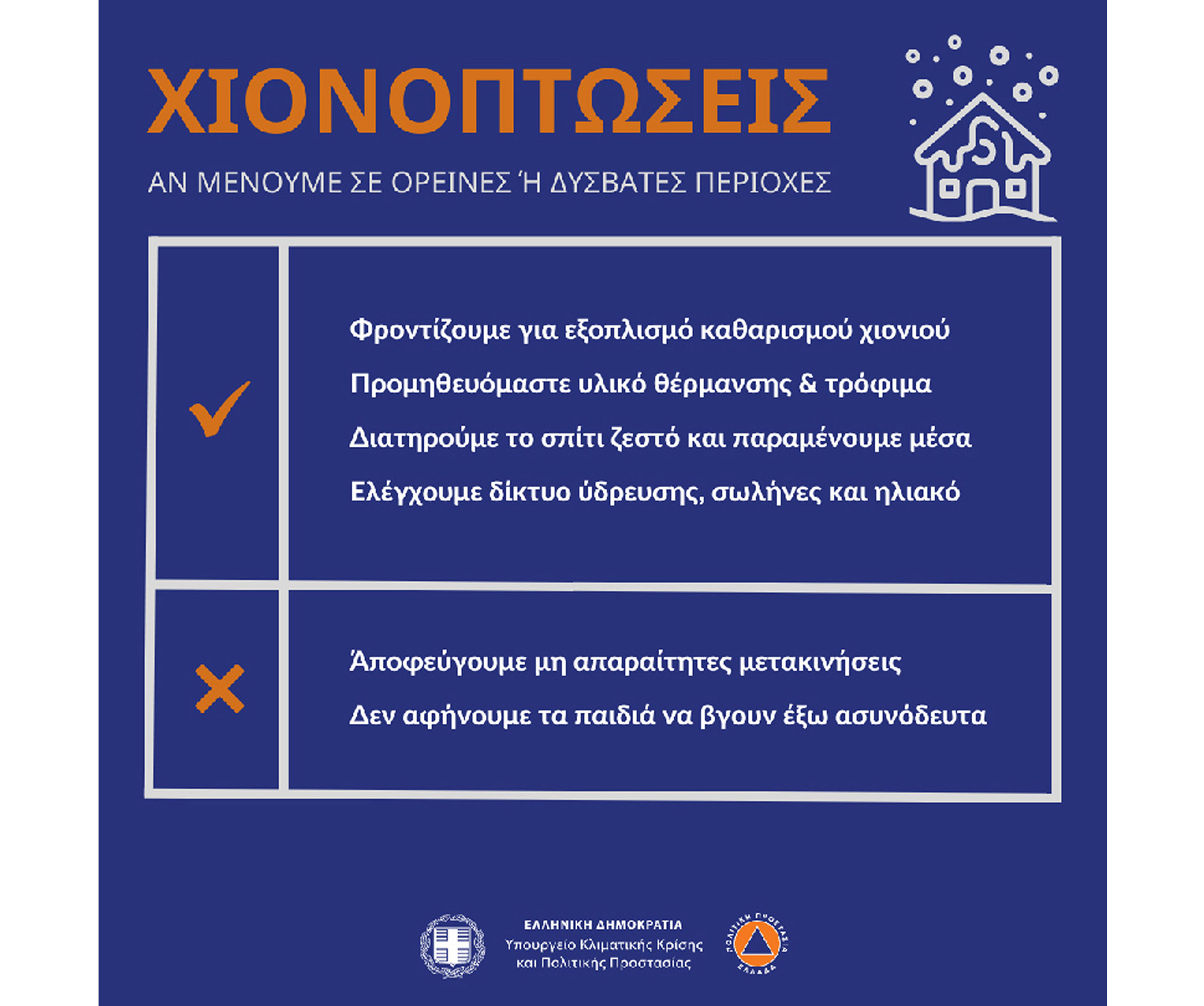Snowfall - Frost
SNOWFALL
Before the snowfall or the snowstorm
If you live in a mountainous or difficult to access area facing problems by snowfalls
- Be equipped with heating materials and food provisions for several days.
- Be equipped with the necessary equipment to remove the snow (i.e. shovels).
DURING THE SNOWFALL OR THE SNOWSTORM
If you are indoors
- Keep your house warm and stay indoors, as much as possible.
- Do not let children go out unaccomαpanied.
- Put on suitable clothes and shoes.
- Inspect the water supply as well as the pipes and solar heater panels.
In a vehicle
- Avoid driving in rough mountain areas.
- Change your itinerary if there is a strong snowfall and you are in a rough road.
- Keep a safe distance from the vehicles in front of you.
- Stay in the car if it has stopped. Put a bright colored cloth on the radio antenna or other visible spot so that the rescue teams can locate you. Start the engine for 10 minutes per hour and remove snow from the exhaust.
If outdoors
- Go to a safe place without exposing yourself to the snowstorm.
- Dress in layers of light and warm clothing instead of one heavy layer. Put on warm and waterproof boots. Prefer waterproof overcoat.
- Be extremely careful when moving in areas where snowfalls are expected to occur.
- If it is absolutely necessary to drive, use tire chains. Prefer to travel during the day. Use highways and inform your relatives of your itinerary.
- If you need to travel in the city, prefer public transport.
FROST
GETTING PREPARED
- Special attention is required in the areas where frost has been created when you drive. Be informed in advance, for the road network situation and make sure that you carry tire chains.
- If you are on foot wear suitable shoes and be careful so as to avoid injury because of slippery roads, pavements etc.
Residential water supply grids
Learn where exactly your water-meter is. Observe carefully where the central and the circumferential water valves (switches of your building) are situated. Inspect and make sure that all water supply valves switch on and off and work properly.
- Make sure the external pipes (e.g. solar heater, balcony taps) are insulated. In the opposite case, you must take care that they are insulated the soonest possible.
- If you are going to be absent for a long time during winter insulate or better drain the network of the solar–water heating system. In addition regulate the heating system of your building, in order to be operated automatically in low temperatures.
- In case you have a solar–water heating system take care during the frost (especially at night) to switch off the water supply towards the boiler and empty out the water from the system.
- Don’t waste water to remove the snow or the frost.
- Try to limit the daily activities that demand increased water consumption (such as washing machines etc).
- Learn whether the manufacturing company or a technician has put anti-freeze liquid in your solar water heater (in the case of closed circuit). If not, get the proper anti-freeze and put it.
- Make sure that there is no tap or toilet leakage otherwise repair them immediately.
- Be sure that the drains in the balconies and terraces are clean from leaves and rubbish and operate normally.
In case the central pipes freeze
- Switch off immediately the central valve of water-supply of your building and check your water-meter. If it continues to “run”, this means that there is leakage in your network. Switch off immediately the central water supply valve and call a plumber.
- If you decide to defrost the pipes, start from the part of pipe near the valve so that the temperature change is gradual. If there are no results call a plumber.
- Check if the electrical installations are wet or in danger and insulate them.






